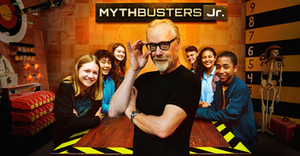Friends of Branded!
Happy Saturday and I hope everyone had a great week.
One of the things I love about the hospitality industry is that everyone, and I mean everyone, has an opinion. I’ll go further, everyone feels comfortable or familiar with this industry. Last time (I promise), I’ll go just a little further, many people feel a certain level of expertise (or even entitlement) when it comes this industry, despite the fact that their only experience is dining in restaurants.
I’ve written about this issue before and for clarity, this isn’t a complaint or a criticism of the customers that may have developed a false sense of familiarity with the hospitality industry as a result of their vast expertise that comes exclusively from their dining experiences (okay, that last comment was a little snarky for a Saturday morning read on my part and maybe not the best way to kick of the Top of Fold). 😊

In all seriousness and to be completely fair, we, as an industry, don’t call these sources of revenues “customers” or “clients,” we call them “guests,” and even “our guests”.
Restaurant owners & operators encourage, promote, and desire to instill this sense of community, belonging, engagement b/c that’s what makes our industry such a special one. The relationships between the venues and the guests that frequent our joints, really does contribute to the joy and success of the business (and it is a business).
We’re a high-touch industry where our manufacturing facility (the kitchen) and retail facility (dining room) are only separated by a wall, and nowadays, with the penchant for open kitchens, not even a wall separates these two distinct, but interdependent functions.
Food & beverage is also extremely personal and the level of trust between restaurants and their guests is nothing less than extraordinary.
Surprise shoutout here and a well-deserved recognition for the Food and Drug Administration that is responsible for protecting the public health by assuring the safety, efficacy, and security of our nation’s food supply. Is the FDA perfect? Of course not, we live in an imperfect world, but this is an agency that does incredible work to protect the health of consumers (our guests).
I’m setting the stage here with what I hope is a balanced understanding or maybe explanation of how guests can feel so comfortable with the dining venues they choose to engage with that as a result, collectively we may have created potentially unrealistic expectations for their dining experiences (and let’s face it, unrealistic expectations are negative for both operators and the guests).
Meeting, and ideally exceeding expectations, is what the hospitality industry, and so many other industries and businesses, are all about. Personally, I don’t like to word the “expensive” or “cheap” when it comes to dining venues or experiences. To me, it’s all about “value” and whether or not a guest’s expectations are being met.
Here comes a little unsolicited suggestion for all guests to consider – the ability to meet (as well as the opportunity to exceed or underperform) expectations works both ways. While you come to the table (pun intended) with certain expectations about the experience you’re going to have, I promise you, your server, or the member of restaurant's team at the venue you’re engaging with has some preconceived expectations of you as well.
Do you want to meet, exceed, or underperform these expectations? Does that matter to you? Do you even care?
Here’s my friendly (and informed) suggestion - you at least want to meet those expectation, but here’s where things get fun, if you exceed them, you will improve your own dining experience.
Here’s a word my attorneys hate that I use, I guaranty it! Okay, not 100% of the time, but more often than not and I dare say the super vast majority of the time, if you exceed the expectations that the venue has of you, the venue will exceed your expectations and that’s how we all win.

Okay, enough of that and now back to my theme of the week – myth busters.
The expectations I’ve been talking about above and particularly the unrealistic ones are par & parcel with the false sense of familiarity that guests often have and as a result project onto the venue as well as on the industry.
Now I’m not talking about just a guest’s projections regarding their dining experience, but also the many technology companies and investors that deploy capital into this industry.
Not to front run my own newsletter and specifically the Shoutout section that appears below, but I included a post from Branded’s friend and partner, Sterling Douglass, the CEO at Chowly (please make sure you check it out b/c it’s a GREAT post by Sterling).
I shared (revealed) his work as an actuary before he became an entrepreneur in the ResTech industry. But here’s something you may not know about our friend Mr. Douglass, Chowly was NOT his first rodeo in the ResTech space. He first wanted to solve the wait-times guests were experiencing for drinks and this important issue that plagued guests at bars & clubs and therefore was costing businesses money and lost opportunities.
Let's just that business is no longer Sterling's area of focus (and I hope it’s okay, Sterling, that I’m sharing this). I leave it others to ask Sterling about his first foray into the ResTech business and maybe even inquire about what he knew about the bar & nightclub business when he produced a solution to solve the issues of unacceptable queues at bars and nightclubs. Was it an ordering issue or a manufacturing (the making of the drinks) issue or both?
Branded has been shown many emerging technology companies that in reality represent a solution that's in search of a challenge, problem or opportunity, as opposed to one that actually addresses, not only a real one, but a high priority one! Technologists, please note, operators spend on what they need to have, not what might be nice to have.
I think my favorite ugly baby moment thus far was a fish farming marketplace which would enable seafood restaurants to purchase directly from local fisherman, as opposed to the marketplaces. I’m not saying this isn’t an idea worth pursuing and I will absolutely get on board with any business that has a value-proposition for operators AND does good thing for other parts of the foodservice ecosystem (and fisherman certainly deserve any and all help and advantages that can be afforded to them).

This direct from local fishermen tech platform was NOT going to save the restaurants any money (in fact, it might cost a little more). But that’s okay, b/c we’re helping the local fishermen, right?
This platform also put the restaurants’ supply chain at risk as inventory was expected not to be as reliable or consistent as the existing marketplace. But that’s okay, b/c we’re helping the local fishermen, right?
No, it’s not okay.
Paying the same (or more) and taking risk on the supply chain for an operator is NOT okay and is NOT worth the good deed of helping the local fishermen. Sorry, not sorry, these are businesses that operate on thin margins and face fierce competition. Price matters and so does a consistent and reliable supply chain.
This direct relationship between local fishermen and restaurant operators might have sounded like a nice idea (from an outsider’s perspective) but it was dead-on-arrival when presented to operators.
Below please find a few of my favorite restaurant myths:
- The guest can send a message to the kitchen or chef by scolding or being difficult with a sever. This is never the right way to engage with people and will also not help you. It also shows your ignorance about how restaurants operate.
- 90% of restaurants fail within the first year. This conventional wisdom is simply false. QCEW dataset found that the percentage of fails in the first year is 17% (which while not a small number, compares favorably to the 21% fail rate of offices of real estate brokers in their first year and 19% for both landscapers and automotive repair shops).
- It’s better for operators to fill seats using discounts than leave seats empty. This would be a short solution and short-sighted. Reward loyalty, not coupon shoppers.
- Always order the “special-of-the-day” b/c it’s what the Chef is featuring and believes is the best dish of the day. Depends on the restaurant, but my suggestion, unless you know the joint well, go with the staples and what the restaurant is best known for.

And now, let’s really dive-in! That’s right, all the above was the appetizer this week. Let’s now get into the main course!
For those paying a little extra attention to the H^2’s Top of the Fold and maybe even our B-List (which is of course created by The Machine and the algorithms that help Branded identify the people doing good things for our industry), you may have noticed my newfound enthusiasm and interest in quick-serve restaurants and particularly QSR chicken restaurants.
You may have even noticed some particular interest and enthusiasm in Dr. Shaquille O’Neal’s company, Big Chicken (that’s right, the Diesel himself holds a Doctorate in Education from Barry University in Miami, with a thesis on “The Duality of Humor and Aggression Leadership Styles”.
Big Chicken’s CEO, good friend of Branded and member of our B-Works community workspace, Mr. Josh Halpern, recorded a podcast with us this week and corrected me when I referred to his boss as “Mr. O’Neil.”
There will be more on Big Chicken another time, and I look forward to sharing all of that with you.
As Branded is allocating time and attention to the emerging QSR space, I’ve had many friends (and LPs) talk about the competitive landscape of the market and specifically the overwhelming number of QSR chicken brands and their associated concerns about there being limited or even no room for more players.
Yes, the QSR market is competitive, highly competitive, but let’s remove any emotion from this discussion and look at some data.
Are there a lot of restaurants and specifically QSR / Fast-Food joints. Yes. Is the chicken market more saturated than the other popular types of venues? No, not according to the data.
According to our friends from Technomic, the wicked-smart restaurant-focused research firm, and its director of industry research and insights, Kevin Schimpf, “chicken is what is hot right now and everyone is trying to get a piece of that action.” I also pulled some data from the Department of Agriculture which shows that chicken consumption surpassed 101 pounds per capita in 2023, more than double how much beef Americans consume.
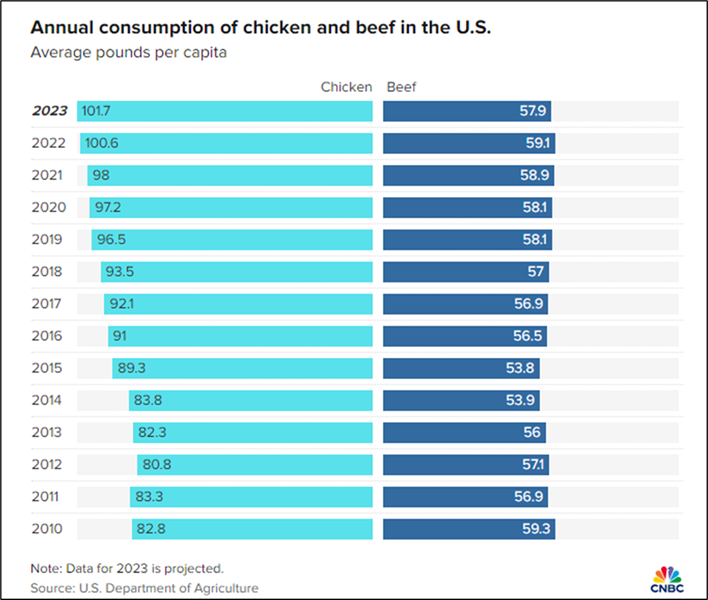
Yes, the chicken wars are real, and I find them fun to watch playing out. According to an article from CNBC, about 5 years ago, Chick-fil-A, the industry leader, leapfrogged Wendy’s, Burger King, Taco Bell and Subway to become the third-largest restaurant chain. That summer, RBI’s Popeyes (not named after the cartoon, but rather Popeye Doyle from the 1971 film The French Connection), rolled out its first chicken sandwich nationwide and the battle was on (like Donkey Kong). 😊

The Chick-Fil-A vs Popeyes battle created great attention for both brands and the traditional burger joints wanted in on this action. McDonald’s launched its own version in 2021 and was leaning into chicken given its popularity and b/c this protein is cheaper than beef (and its prices fluctuate less dramatically).
Yes, Chick-Fil-A is the market leader while Popeyes has secured the silver medal over Kentucky Fried Chicken (KFC) getting the bronze medal in the US by market share.
But don’t count out the emerging players. Our friends at Dave’s Hot Chicken have now opened 200 stores and have done so at a blistering pace. Congrats fellas and I love having one of your stores on the upper east side of Manhattan!
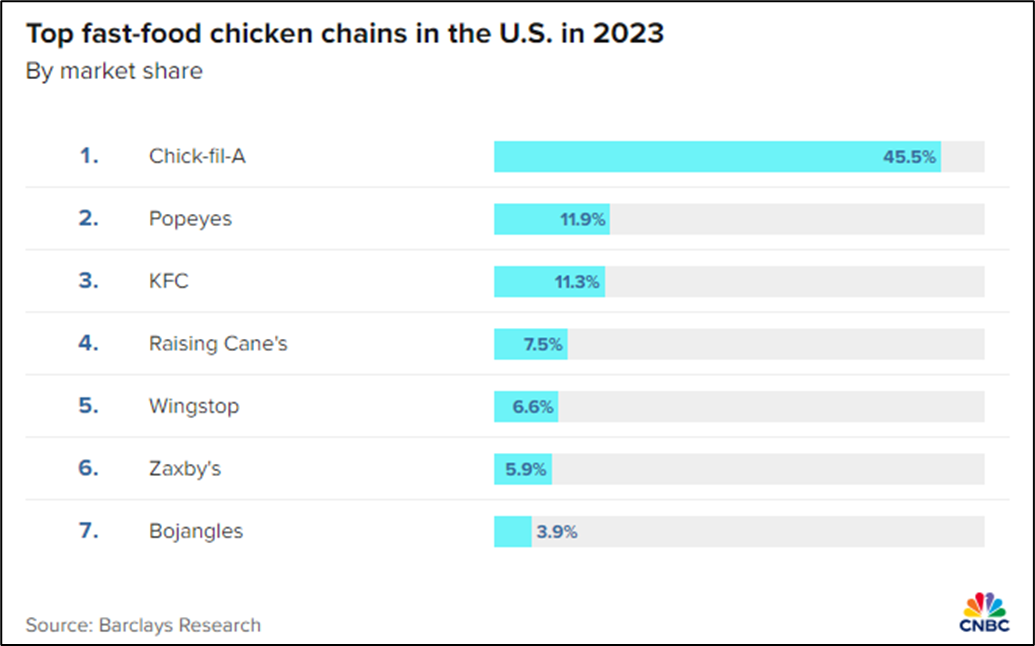
As for the market being overly competitive or saturated, well, I’m old enough to remember a time where Madison Square Park in NYC didn’t have a Shake Shack and this awesome brand now it has over 500 stores (and I don’t think the US was lacking in burger joints at the time).
My point, there are ways for brands to compete and isn’t that what free markets and healthy competition is all about.
Ask yourself the following question, do you have the same favorite brands and like the same restaurants as your kids or your nieces & nephews. Heck, my 7-year-old daughter is rooting for the Sixers over my beloved Knicks in this first-round match-up of the NBA playoffs! You think I’m going to get her to eat at the joints I want? 😊

Also, when you think about the competitive landscape in the QSR market, you can’t limit your thinking to just the US market. Although I do want to point out that America does have the LARGEST market in the world with QSRs with estimated sales at over $406 billion and that's expected to reach over $662 billion by 2029 (for a constant annual growth rate of 10.28%).
The global QSR market reached over $978 billion in 2023. So, when you think about the global market and investment opportunities, you must look at the international markets. KFC’s domestic business might lag Chick-Fil-A’s, but they’ve got the US market leader beat in China. KFC is the largest fast-food brand system sales in China.
Long-time readers of the H^2 might feel I’ve gone a little deeper than usual on this chicken topic, but as Branded increases its focus on emerging QSR brands and specifically the ones that are tech-forward thinkers, we're also looking at the largest segment of consumer market, Gen Alphas (born between 2010 and 2024). This generation is expected to reach 2.2 billion worldwide by the end of the year and by the end of 2025, there will be more Gen Alphas than Baby Boomers.
While Gen Alphas are coming on strong, it’s Gen Z (those born between 1997 and 2012) that QSRs need to be thinking about right now. Much has been written about Gen Z and specifically what they want and what matters to them. This socially conscious generation is uniquely tech-savvy, socially conscious and prioritizes racial equity.
I’m going to highlight here only one specific factoid about Gen Z, they want brands that support LGBTQ+ rights, same-sex marriage, and believe in political activism.
Take this last comment for what it is and maybe take a moment to think about these chicken wars. Just saying…
Yes, Branded is making its bet in this space and I’m super excited about it. We’re believers in community and the value that come from a strong ecosystem where the constituents are aligned b/c of the meaningful flywheel that can be created by the intersection of their respective self-interests.
This next chapter Branded is embarking on is super-exciting and it’s going to be fun. Big fun! Can you dig it?!
I look forward to any of our industry friends and partners continuing to be part of our journey.
It takes a village.
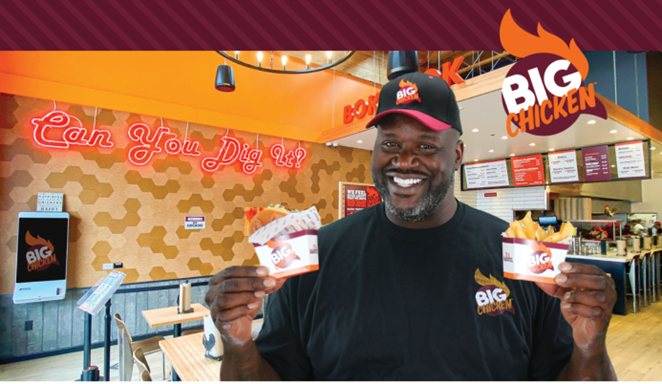

This week’s shoutouts goes to two of Branded’s portfolio companies that aren’t just working hard to deliver value to operators, but are also continuing to create content and thought leadership for our industry. I also added a third portfolio company to this week’s shoutout section as a result their winning yet another award and meaningful recognition.
With respect to content, as you can imagine, Branded looks favorably on those who put themselves and their views out there for all to read, critique, and hopefully even learn a little something from when it comes to thought leadership.
The Branded Team believes in content and the creators (shocker!). That’s part of our obsession with supporting hospitality operators, brands and the F&B, and experiences they create for their guests. We understand and respect the importance of the distribution channels, marketplaces, and the avenues we use and even need to gain access to the content we crave, but all is not equal, and we’re not interested in giving out participation trophies, so we rank content providers in the pole position.
Gen Z represents about 20% of the US population and have an estimated buying / spending power of $360 billion annually (if you’ve noticed my enthusiasm in the various generations this week, you’d be correct). Gen Z is a generation that grew-up with rapid digital changes including smartphones, wearables, and virtual assistants and other disruptive teach. This makes them far more open to embracing and integrating with new technology than any previous generation.
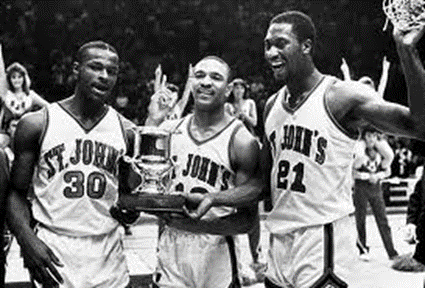
First up, our guest contributor and the wicked-smart crew from Brizo Foodmetrics. Our friends and partners at Brizo are so good at being the source of truth for the foodservice industry, I think I’m going to start calling them Branded’s very own Walter Berry. IYKYK
To all those that wish to successfully sell into the foodservice industry, you need to know your customers! You want to know how, please give Brizo’s article below a read.
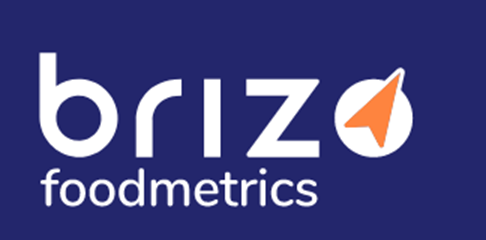
Below please find Brizo’s contribution to this week’s H^2:
How to Conduct Restaurant Market Research Like a Pro
Thorough market research is crucial to strategic decision-making in any industry, and the foodservice market is no different.
Manufacturers, distributors, and restaurant tech companies all need access to market intelligence to analyze customer needs, industry trends, and competitive landscapes. Market research helps businesses make informed decisions on everything from product development to sales campaign messaging.
In this article, we’ll walk you through the essentials of restaurant market research and how to conduct it effectively with a market intelligence platform like Brizo.
Restaurant Market Research: Why Is It Necessary
Understanding the ‘why’ behind market research can be a game-changer for anyone involved in the restaurant industry. Here’s how it makes a difference:
Identify Consumer Preferences
Market research helps draw a clearer picture of what consumers want and expect. By understanding their tastes and preferences, you can develop and offer the right products and services to meet their needs.
With the end consumer in mind, the sales and marketing campaigns you craft will resonate better with the foodservice establishments serving them.
Prospect Strategically
It’s not enough to only research the end consumer. You need to know your buyers, too! For most foodservice suppliers and vendors, your direct customer is a restaurant business who, in turn, uses your product or service to enhance their own operational or customer experience.
Understanding the needs and challenges of your buyers is necessary to fine-tune your messaging and streamline your sales processes. Having a good understanding of your total addressable market (TAM) and ideal customer profile (ICP) will enable efficient prospecting and ensure you are offering the right product or service for your market.
Assess Competitors
Understanding the competitive landscape for your product or service is key. Market research provides insight into what others are doing right (or wrong), allowing you to strategize effectively and hone your competitive edge.
By understanding your competition, you can gain insights into what approaches are most effective, what strategies to avoid, and how to adjust your product and positioning to stand out from the crowd and achieve better results. You can also use benchmarking to identify new opportunities and trends.
Stay Ahead of Market Trends
The restaurant industry is constantly in flux. To stay relevant, you need to conduct research and ensure your products or services align with current and future market demands.
Keeping your finger on the pulse of upcoming trends and market shifts will help you identify new opportunities and adjust strategies to ensure long-term success. Additionally, trend tracking can help you stay ahead of the competition and identify potential risks to your brand or product.
Mitigate Risks
In a sector as dynamic as the foodservice industry, risks are inevitable, but staying informed is one way to combat them. With careful research, you can gain a clear view of the market and identify potential pitfalls and blind spots, enabling you to make informed business decisions and reduce risks.
On the flip side, research can uncover new opportunities, allowing you to make the most of your resources and grow your foodservice business. It can also help you better understand your customer base and tailor your products and services to better suit their needs.
What’s Next?
Whether you’re manufacturing new products, distributing ingredients, or developing the latest restaurant technology, incorporating insights from restaurant market research into your business strategy is a necessary driver of success.
For even deeper insights, you can explore Brizo FoodMetrics – your go-to foodservice market intelligence platform.
Steps to Conducting Restaurant Market Research
Taking a strategic approach to gathering, analyzing, and interpreting market data is a powerful precursor to making informed business decisions. For vendors and suppliers in the foodservice industry, these steps will help you conduct effective market research:
1. Define Your Objectives
Clearly define what you want to achieve with your research. Is your goal to understand your prospects, identify market shifts, or analyze competitors? What about identifying your total addressable market or zeroing in on your ideal customer profile?
2. Choose the Right Methods
Use a mix of qualitative and quantitative methods. Online surveys, focus groups, and interviews can provide in-depth insights, while data analysis and market segmentation offer quantitative support.
3. Analyze Your Competition
Understand what your competitors are doing. Analyze their strengths and weaknesses to identify opportunities for your business.
4. Understand Your Audience
Dive deep into the preferences, behaviors, and needs of your target restaurants. This will help tailor your offerings to meet their expectations.
5. Leverage Technology
Utilize technology like Brizo FoodMetrics, a market intelligence platform for advanced analytics and insights. Having such a powerful tool at your disposal can give you an edge in understanding the detailed dynamics of the market.
6. Stay in the Know on Trends
The restaurant industry is fast-paced. Keep up with the latest market shifts and trends to ensure your strategies remain relevant and effective.
7. Update Your Knowledge
Market research is not a one-time task. Regular updates are essential to keep up with the evolving market.
By following these steps, you can conduct restaurant market research effectively, ensuring your strategies are data-driven and aligned with market needs. Remember, in the restaurant industry, knowledge is power. Equip yourself with the right information to make data-driven decisions and stay ahead of the curve.
Conclusion
Navigating the ever-changing landscape of the restaurant industry can be a challenge. To guide your sales and business strategies, you need a robust, reliable source to help you conduct effective market research.
The data-driven insights offered by a market intelligence platform Brizo FoodMetrics can be leveraged to enhance your sales productivity, increase your conversion rate, and make smarter business decisions.
Here’s how Brizo FoodMetrics can help:
· Comprehensive Market Data: Access current, accurate data on foodservice establishments across the US, Canada, UK, and Ireland.
· Granular Insights: Analyze over 1.9+ million foodservice establishments, 2.5+ billion menu items, and 500+ in-use restaurant technologies.
· Targeted Strategies: Utilize detailed insights for precise marketing campaigns and sales prospecting.
· Competitive Intelligence: Stay ahead of your competitors with in-depth visibility into the foodservice market landscape.
Ready to transform how you conduct restaurant market research? Find out how Brizo FoodMetrics can help you scale your business in the foodservice industry. Dig into the data with a free trial today!

Next up on our shoutout list, our friends, and partners from Chowly and specifically a post from the company’s Co-Founder and CEO, Sterling Douglass. A smart person can write a short post, please note, I write long-ones!
If you’re not following Sterling on LinkedIn, I’m telling you that you’re missing out. This isn’t the same Mr. Douglass that was doing actuary work for Towers Watson (the analysis of the financial costs of risk and uncertainty through mathematics, statistics, and financial theory to assess the risk of potential events that help businesses and clients develop policies that minimize the cost of risk).
No sir, this is an edgier technology leader that’s making his views known b/c wants restaurant operators to win and believes the playing field should be democratized. Sterling, or as my young daughter calls him, Thor, specifically holds dear that the SMB market should have every tool possible that the enterprise players are afforded.

This week Sterling jumped into the revenue management debate and made it clear that restaurants should NOT be prevented or shamed for leveraging the most basic principles of economics 101.
Here’s Sterling’s post and if you want to challenge these views, please do so professionally, respectfully and in the best interest (“PRB”) of a healthy debate. Otherwise, bring your friends b/c Sterling has many!
Here’s Sterling’s contribution to this week’s H^2:
It’s Economics 101
Not sure I'll ever understand why restaurants get blasted for practicing basic economic 101 principles in their business. I'm talking about a simple supply/demand curve.
They've been doing it for a while and most of their tactics have been to increase demand over the past couple decades.
I'm talking about happy hours, early bird specials, and daily discounts.
All these tactics allow the restaurant to create more demand when there is less. The intersection of the supply and demand lines dictate the price charged for the good or service.
In these cases, they have little demand during these slow times. And then during their busier times (could be lunch, dinner, of weekends) the prices are higher.
When consumers get the perceived benefit of lower prices because of this principle, they love it. They hunt for it. They make TV shows around couponing.
But more and more restaurants are using the same principle and being accused of price gouging. Dynamic Pricing has been becoming more and more popular.
Nowadays as delivery has become more and more prevalent due to consumer's preference being more heavily weighted by convenience, there are periods where restaurants are seeing a higher demand than they can service.
So now demand is outweighing supply during some of these busier times. So, what does the simple economics 101 theory say? Increase prices.
This is getting easier for restaurants to do with technology.
And I am 100% for it. Restaurants need to be able to adjust prices to fit the supply/demand curve just like every other business that does this.
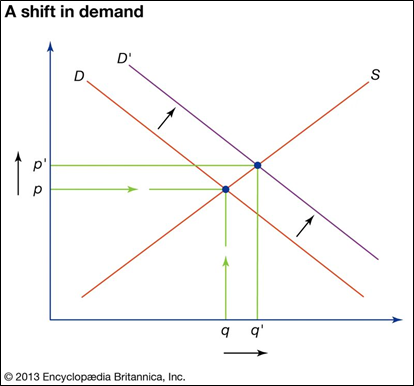
Finally, and in the spirit of School House Rock (where 3 is a magic number), I’ve got one more shoutout this week. Branded is super proud that Forbes has named MarginEdge, a portfolio company, as One of America’s Best Start-up Employers in 2024.

MarginEdge, the leading restaurant management and bill payment platform, announced that it’s been recognized by Forbes on the America’s Best Startup Employers 2024 list.
The application-free Forbes America’s Best Startup Employers 2024, in partnership with market research firm Stastia, reviewed 3000 privately-owned companies that are headquartered in the United States, employ more than 50 people, and were founded between 2014 and 2021. The companies were evaluated based on three primary criteria: company reputation, employee satisfaction and growth. After assessing millions of data points to determine company scores, the 500 startups with the highest scores made the final ranking of the America’s Best Startup Employers 2024 list.
Recent best workplace achievements for MarginEdge include Glassdoor’s Best Place to Work in 2024, Inc. Best Workplaces, The Washington Post Top Workplace and Washington Business Journal Best Places to Work. Other recognitions include 2023 Inc. Power Partner Awards, 2022 and 2023 Inc. 5000, Washington Business Journal’s Fastest Growing Companies 2023, and The Americas’ Fastest Growing Companies in 2023 by the Financial Times.
MarginEdge’s mission is to create a world where restaurant operators can focus on the business they love. By using best-in-class technology to eliminate unproductive paperwork and streamline the flow of operational data, MarginEdge is reimagining the back office and freeing restaurants to spend more time on their culinary offerings and guest experiences. The platform offers market-leading invoice processing, inventory management, recipe analysis, budgeting, performance tracking and supplier bill payment capabilities. Founded by industry veterans, MarginEdge serves a diverse group of operators from single units and small chains to large franchise and hospitality groups, providing a high impact product that resonates across the hospitality industry.


Readers of the Hospitality Headline, that are interested in learning more about Branded’s portfolio companies, investment strategies and future opportunities, are invited to explore becoming part of our Access Hospitality Network.
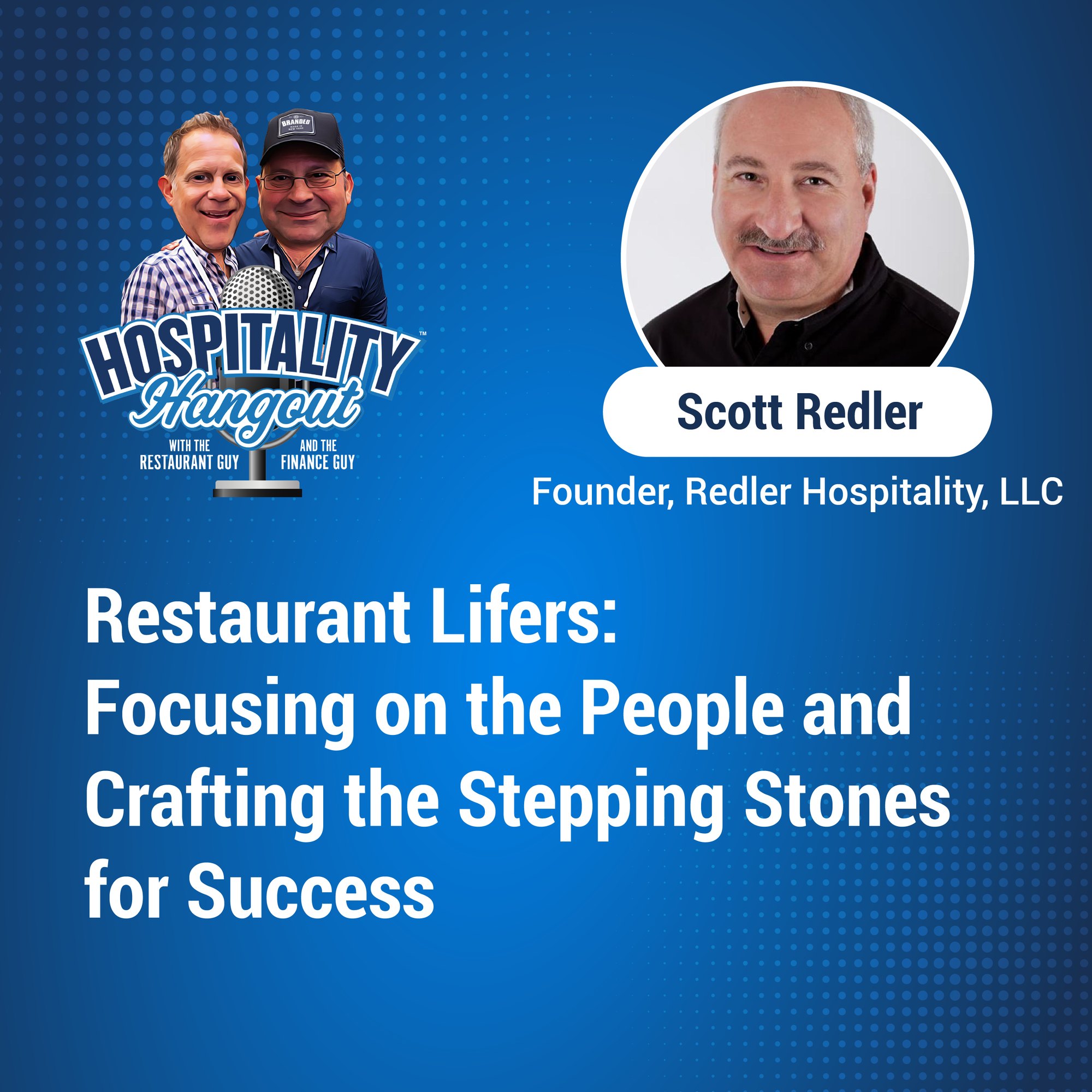
In today’s episode of Hospitality Hangout, Michael Schatzberg, “The Restaurant Guy,” and Jimmy Frischling, “The Finance Guy,” are joined by Scott Redler, co-founder of Freddy’s Frozen Custard and founder of Redler’s Hospitality.
Scott tells his story of 48 years of experience, dedication, and admiration for the restaurant industry and creating an impact on others’ entrepreneurial lives and experiences. From the birth of Shanghai Charlie’s and Timberline Steakhouse to navigating the complexities of finances, location, and ergonomics, Scott's journey is a personal tale of passion and perseverance.
You can tune in on Spotify, Apple, Amazon, iHeart, or your favorite listening platform!
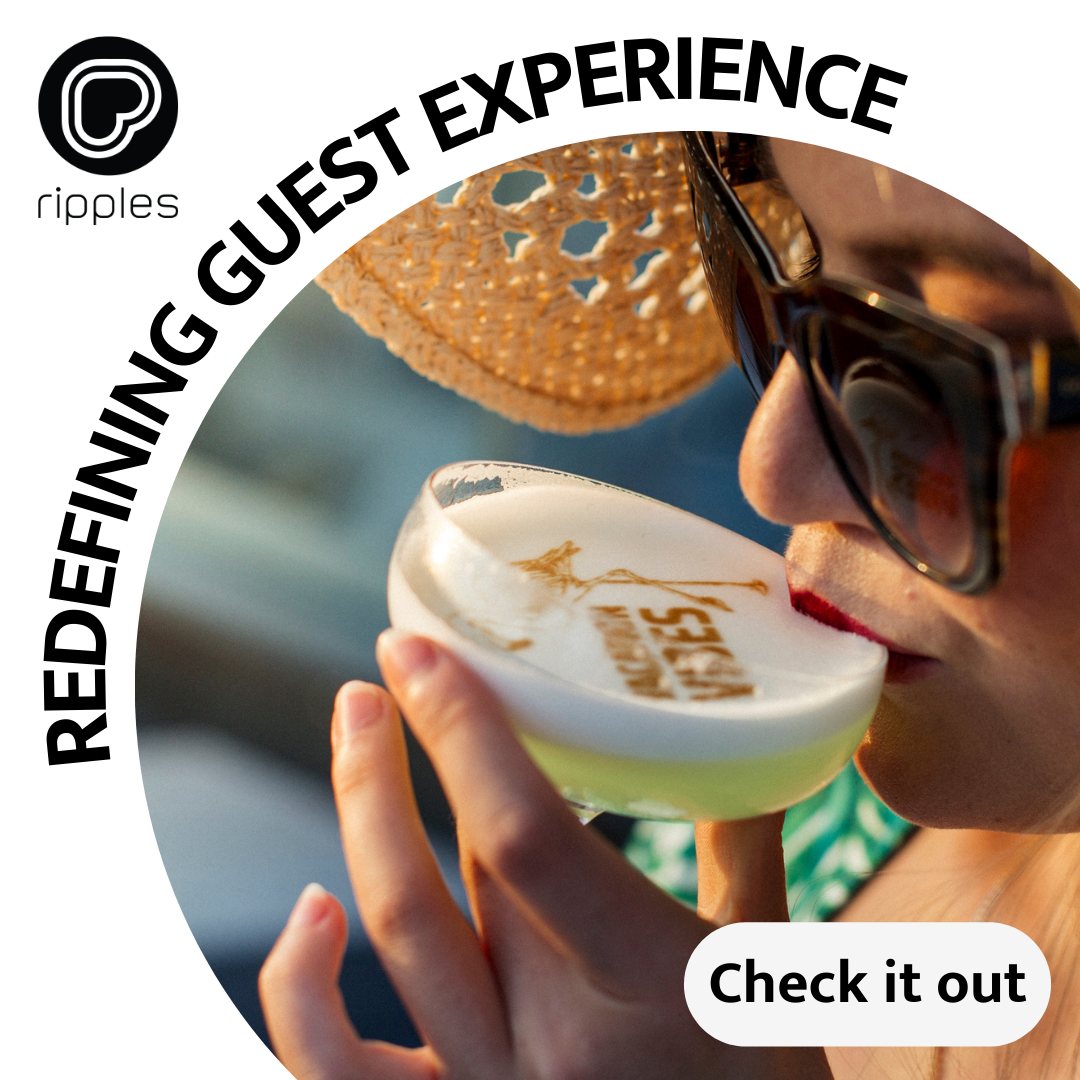
Make your drinks go viral!
Craft personalized drinks for an unforgettable guest experience!
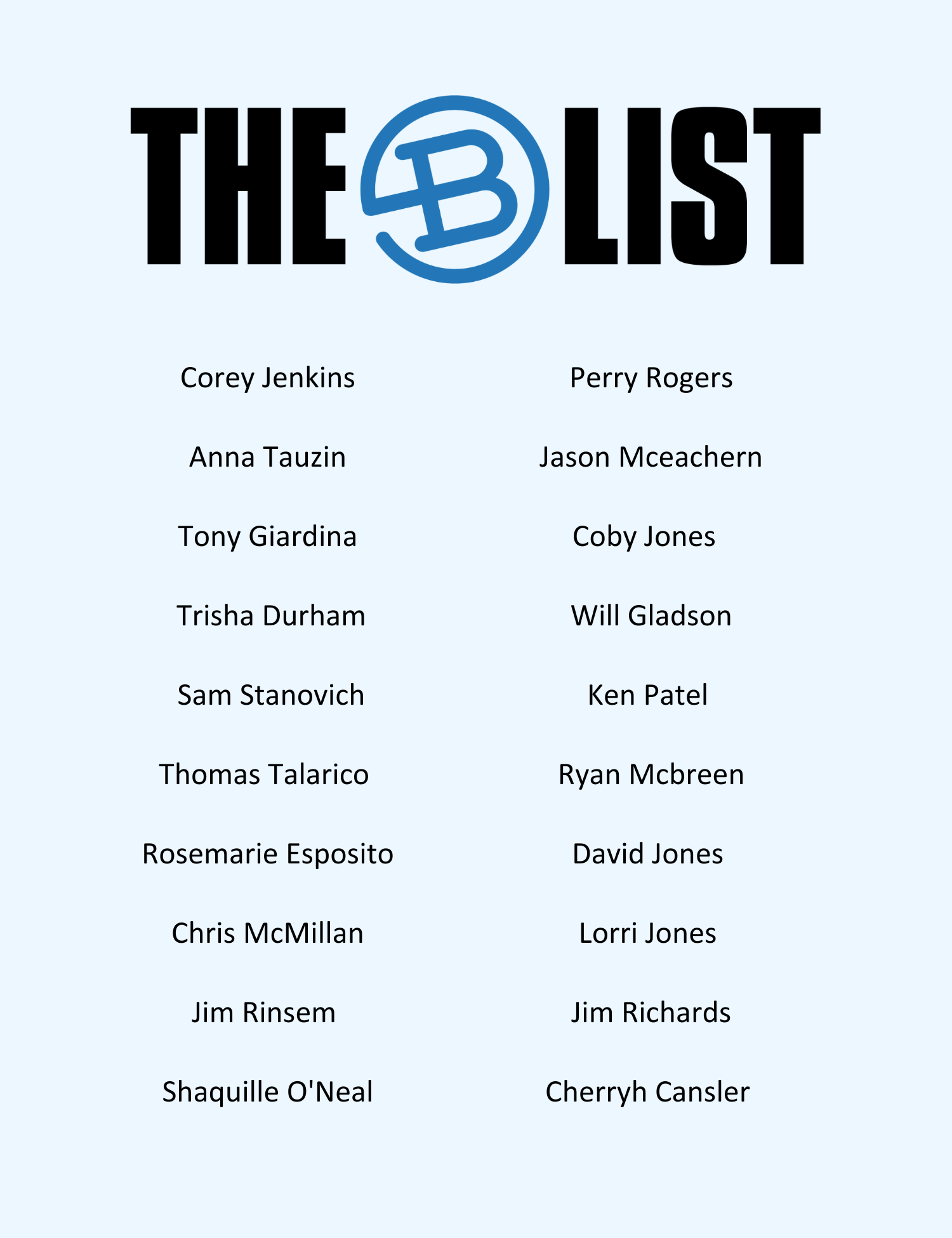
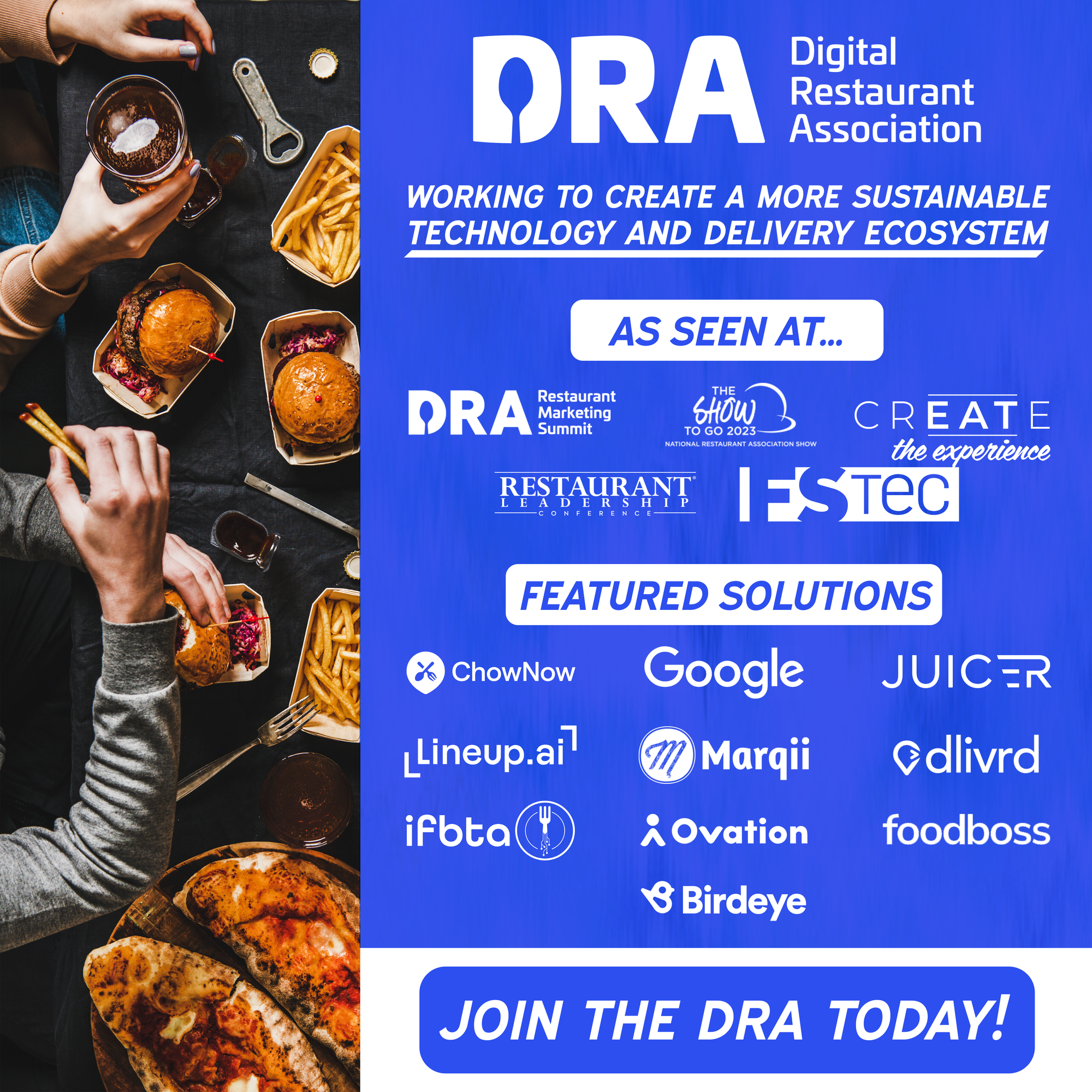
Digital Restaurant Association
We champion restaurants to thrive in a digital world
TECHNOLOGY
Mastering Account-Based Marketing: A Comprehensive Guide to Transforming Large Account Strategies
By: Seth Temko, Solutions Services Partner at Branded Hospitality Ventures

Discover a step-by-step playbook to effectively navigate account-based marketing, tailored specifically for high-value accounts to enhance B2B engagement and conversion.
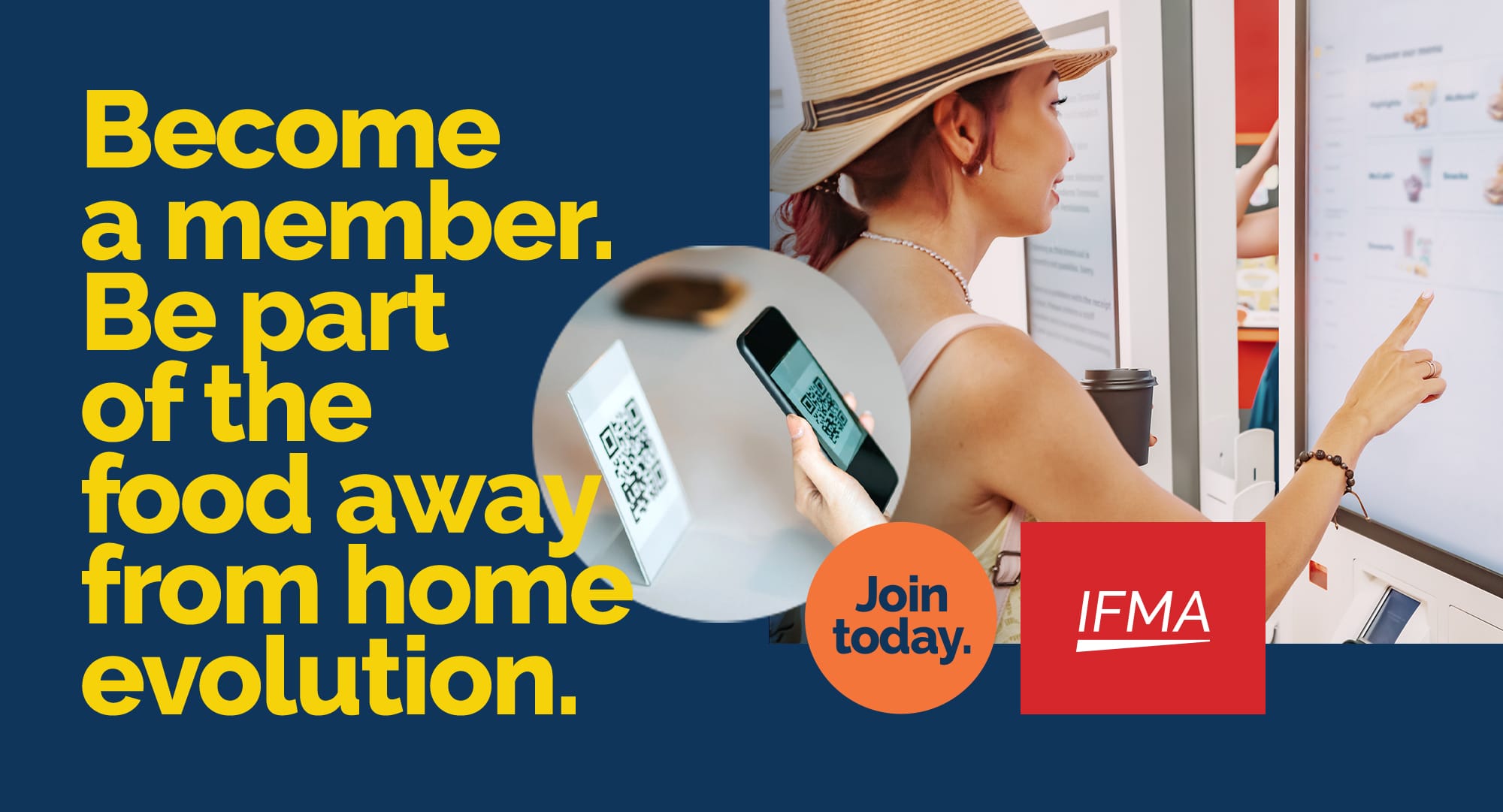
Welcome to the new IFMA
The future of food-away-from-home is evolving—and so is our membership structure.
MARKETING
3 No Cost Secrets to Increase Your Average Order Value
By: Rev Ciancio, Head of Revenue Marketing at Branded Hospitality Ventures
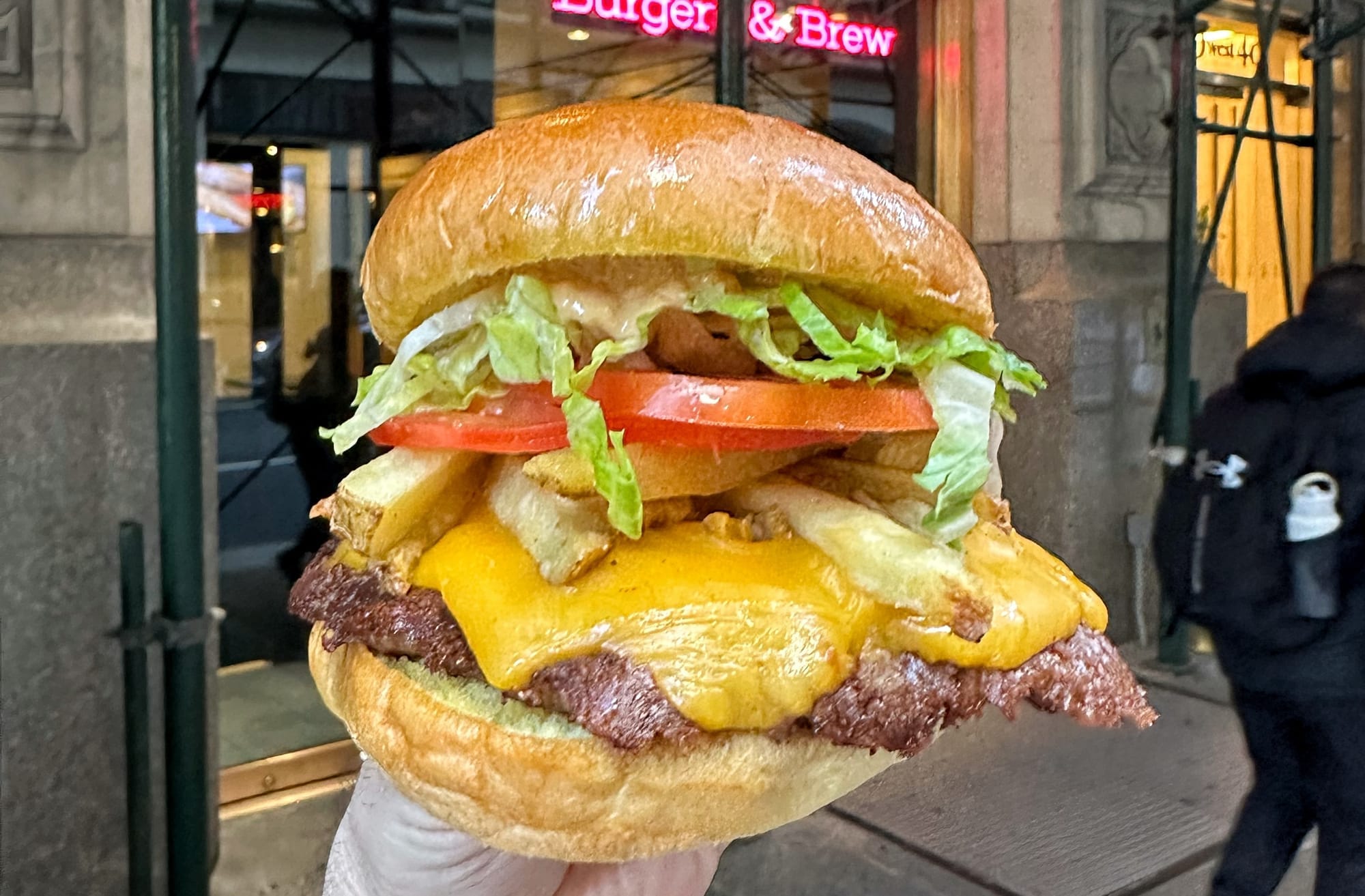
New guest acquisition is the most expensive part of the guest sales funnel and 70% of guests only ever dine at a restaurant once, profitability on that one meal is critical. “Would you like fries with that?” — is not gonna cut it anymore.

About ACG New York
Founded in 1954, ACG is the premier M&A deal-making community with a mission of driving middle-market growth. ACG’s global network operates within 61 local markets worldwide and comprises more than 100,000 middle market professionals who invest in, own and advise growing companies. ACG provides events, conferences, bespoke meetings, deal-sourcing forums, unique experiences, educational seminars, and numerous benefits to non-members and members alike.
ASK THE HEADLINE
🔍 Got Questions? We've Got Answers! 🌟
Satisfy your thirst for knowledge? Look no further! It's time to dive into our brand-new segment: "Ask The Headline"! 🎉
📅 We'll be answering YOUR questions every week. And here's the best part: you can choose to stay anonymous or receive a fabulous shout-out when we feature your question!
That’s it for today!
See you next week, (about the) same bat-time, same bat-channel.
It takes a village!
Jimmy Frischling
Branded Hospitality Ventures
jimmy@brandedstrategic.com
235 Park Ave South, 4th Fl | New York, NY 10003
Branded Hospitality Ventures ("Branded") is an investment and advisory platform at the intersection of food service, technology, innovation and capital. As experienced hospitality owners and operators, Branded brings value to its portfolio companies through investment, strategic counsel, and its deep industry expertise and connections.
Learn more about Branded here: Branded At-A-Glance


